
While teaching first grade intervention, I had a hard time finding engaging consonant blends activities that would capture my struggling readers' attention! So I took our wildly popular kindergarten cup stacking challenge and developed a version that incorporates all the blends my first graders needed to learn.
Print and begin stacking cups to match the pictures. Some challenges include 6 cups, some 8, and some 9! I had to pry these cute little cups from my soon-to-be first grade daughter's hands, who can't resist a hands-on approach that enhances learning through play.

*As an Amazon associate, I may get a teensy commission from any purchases made through my links. Thank you!
The six sets of consonant blends activities will be a comprehensive way to practice reading consonant blends with first graders. I would even suggest them to advanced kindergartners and second graders needing more practice.


What you need to play:
To organize, you can write the words in different colors, as shown with the subtraction cups, or use labeling stickers like I did for our consonant blends cups. Some challenges have 6 cups, some have 8, some have 9. So you have differentiation too! Win, win!

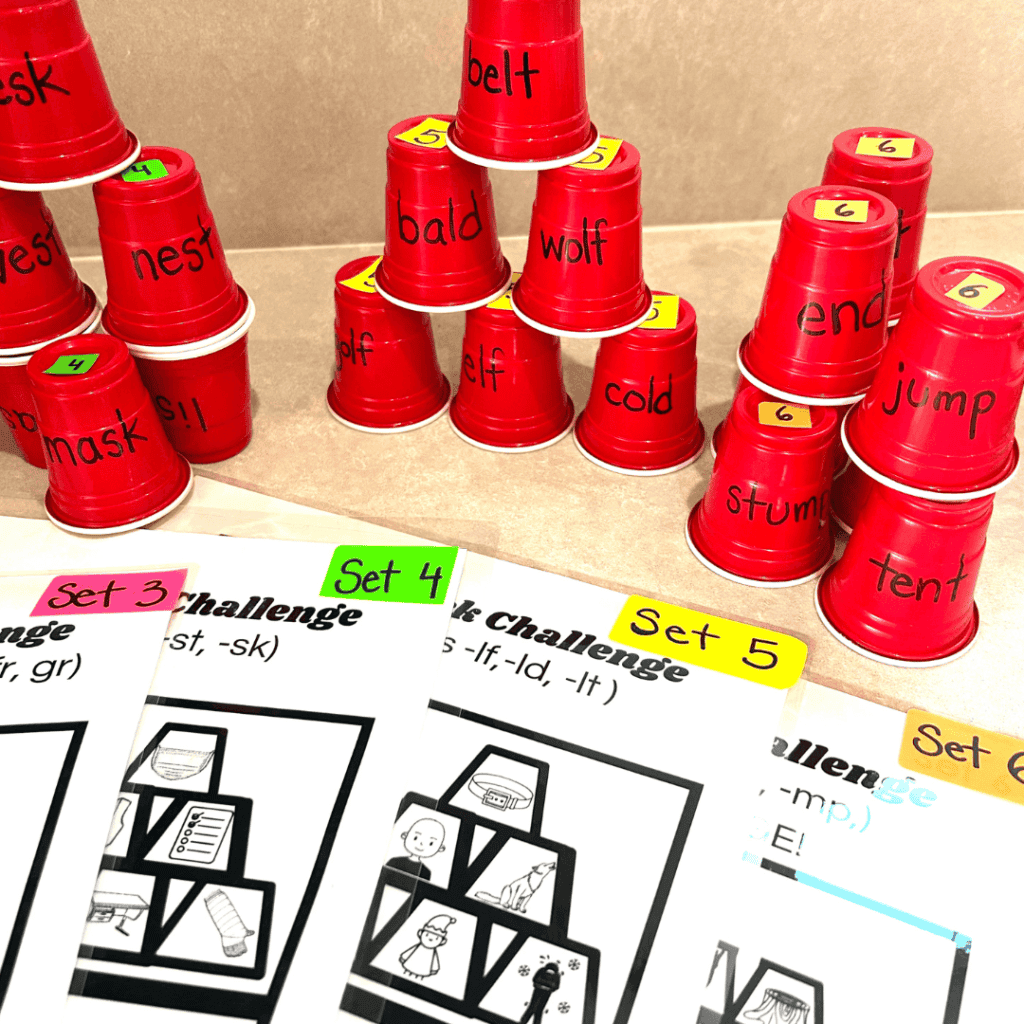
Teaching blends to first graders involves a few key things:
Before kids read and write blends, they need to be able to hear that the blend is made up of multiple consonant sounds. Orally segmenting works into their smaller parts and blending sounds into whole words is key!
Example of what I would say while teaching this skill: What word am I making? /s/ /k/ /i/ /m/. Blend the SOUNDs together to make the word "skim!" Now let's segment that word. Put up 4 fingers and touch a new finger for each sound: /s/ /k/ /i/ /m/.
I find that when I explicitly teach consonant blends, then follow up with a game, the information gets put to practice in a meaningful way. For direct instruction, I love the free resources provided by UFLI Toolbox! They have a great scope of sequence that helps me teach consonant blends in an order that make sense to new readers.
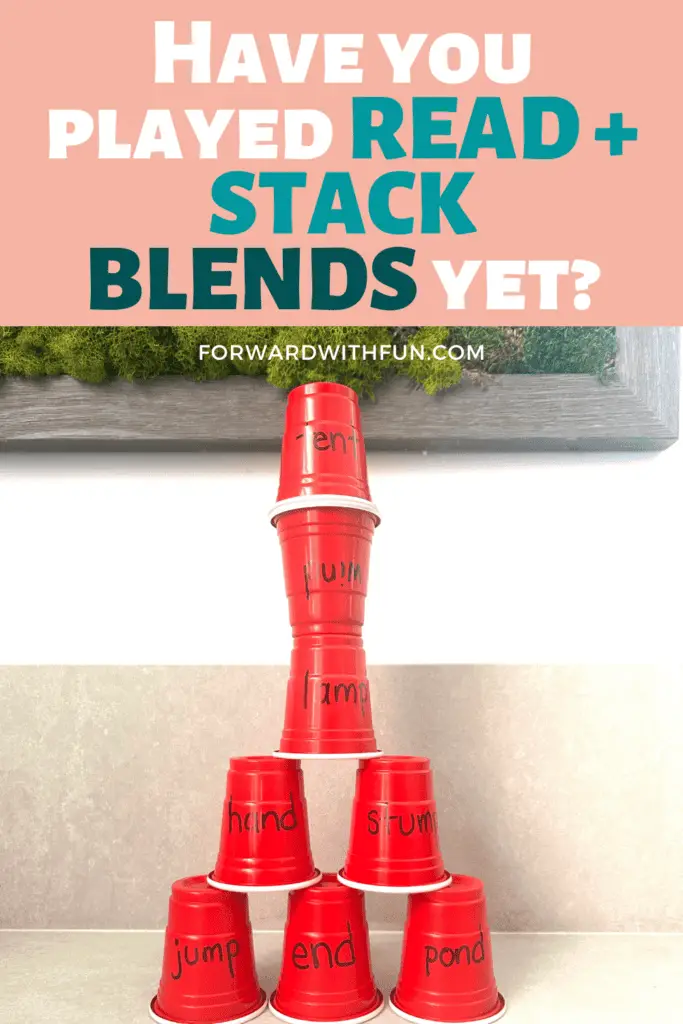
The key to teaching blends in a fun way is to incorporate games and activities that appeal to young learners. Activities like cup stacking with blend words provide a tactile experience that keeps children engaged while they learn. They'll be less flustered by the new and possibly difficult skill, because they'll be in a fun frenzy of cup stacking. It's almost like they don't know they're learning!
First graders typically begin with two letter beginning consonant blends such as "bl," "cr," "dr," in words like blip, cram, and drop. Kids are most likely to struggle with the "tr" confusing it for "chr" and the "dr" confusing it for "jr." I find that making an anchor chart for those specific sounds can help serve as a visual reminder.
The Cup Stacking Challenges for consonant blends not only include all the beginning blends listed but also the very important ending blends! You'll find ending blends with n, m, l, and s in these activities in words such as jump, desk, hand.
When teaching blends to first graders, it's beneficial to start with blends that appear frequently in simple, everyday words. I always begin with beginning consonant blends that include the letter L, then I move on to ones that have the letter R next. Focus on blends like "bl," "cl," and "fl" initially, as they are encountered early in basic vocabulary and are easier for young learners to grasp. As children become more confident, gradually introduce blends that are slightly more challenging but still commonly used.
Ready to try these engaging consonant blends activities with your first graders? Explore our printable resources designed to make learning blends a delightful adventure!
Download your First Grade Frenzy Consonant Blends Games Now: bring joyful learning into your classroom!
Have you ever heard of word segmenting? This essential skill helps kids encode (aka spell) words. Word segmenting means breaking up words into their parts/sounds. An example would be taking the word CAT and "chopping up the word" to say "/c/ /a/ /t/."
This post will include 3 kinds of sound parking lots that my students in kindergarten AND first grade find simply irresistible. To download your 9 different activities now, scroll to the bottom!

*As an amazon affiliate I may receive a teensy commission if you buy something from one of the links in this post, at no additional cost to you. Thank you.
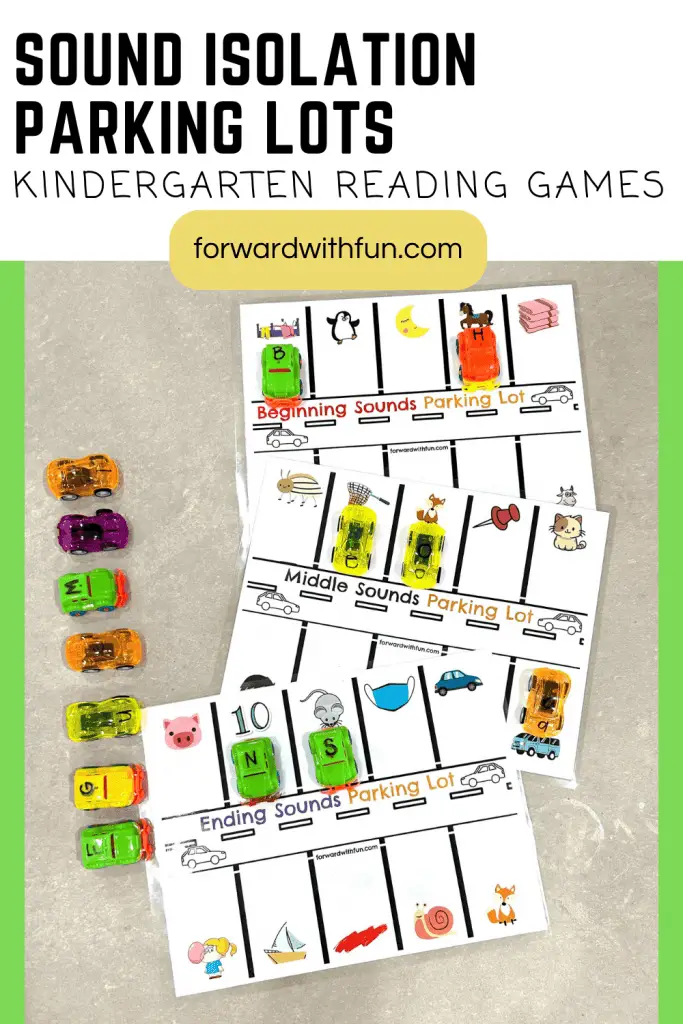
Word segmenting is breaking down words into beginning, middle, and ending sounds. Sometimes segmentation is performed without connection to letters, building up kids' pre-reading skills that fall under the umbrella of phonemic awareness. Once kids begin connecting letters to these segmented sounds, they're learning phonics.
By the end of kindergarten, kids are expected to spell CVC words (consonant vowel consonant words) correctly. In order to do this, they'll need to have the skill of phonemic isolation, to segment beginning, middle, and ending sounds of these words. To spell correctly, kids will need to connect those sounds to the letters they've spent so much time studying.
This is the most kid-approved way to practice all these essential skills! WORD SEGMENTATION parking lots for the win! Woohoo.
The three skills highlighted in these kindergarten level activities are:
As children isolate each sound, they gain the skills to segment the whole word,(especially when they move beyond the beginning sounds).
When I first made these parking lots, I chose beginning sounds only. It turns out, the kids I worked with loved the activity so much that they asked me to create more! And so, I created a whole bundle of beginning, middle, and ending sound parking lots to ensure kids master word segmenting.
You'll find beginning, middle, and ending sound parking lots. Each set will have 3 different mats, so kids can practice each skill 3 different ways, for a total of 9 downloadable parking lots. Bundle them all to save, or buy one at a time based on what you're teaching.
You'll need cars. These cute Amazon cars are the most recent ones I've purchased, and they're just the right size. My original cars pictured here are from the Dollar King store, which might be regional. The kids prefer the Amazon ones though!
These mats will get LOTS of play, so I recommend laminating them before use. Amazon also has my fave laminator and thick, lasting lamination sheets. I've had this laminator for 4 years, and it's still going strong.
Get your 3 beginning sounds lots right here for $3.33 (or grab the discounted bundle at the end of this post.)
Get your 3 ending sounds lots right here for $3.33 (or grab the discounted bundle at the end of this post.) I recommend ending sounds as the second skill to work on before complete word segmenting. If your kiddos are struggling with ending sound skills, here are some great activities to practice before moving onto isolating middle sounds.
Though it seems like middle sound practice should come right after beginning sounds, vowel sounds are the hardest sounds for kids to master. I highly recommend making sure kids have mastered their beginning and ending sounds before moving onto middle sound isolation.
If you only want middle sound parking lots, you can get them HERE. Or scroll down for the bundle of all 9 word segmenting parking lots for only $8!
Get all 9 different printable parking lots to practice beginning sounds, middle sounds, and ending sounds for a steal. Usually $9.99 for all three, now only $8 for the bundle! You'll save 20% by buying them all together.
A wonderful way to capture the magic of family trips is by having your children write reviews of their family adventures; so take along this vacation worksheet on your next trip. I thought of this idea while on a recent family trip to Great Wolf Lodge with my family, wondering if my children would remember how much fun we had together.

It occurred to me that by making age-appropriate trip review forms for my 5 and 8 year old, I could capture their thoughts. I plan to have them complete one for each trip and place them in a family trip review binder.
In this blog post, I'll explore the benefits of engaging kids in this activity and provide the three free vacation worksheets that parents and educators can use to inspire trip reviews. Let the joy of reminiscing and storytelling unfold!
Children possess a unique lens through which they view the world, and their perspectives on family trips are no exception. Encouraging them to share their thoughts fosters communication skills, enhances vocabulary, and boosts their self-esteem. Moreover, it's a delightful way for parents to gain insight into their child's experiences and feelings during the vacation.
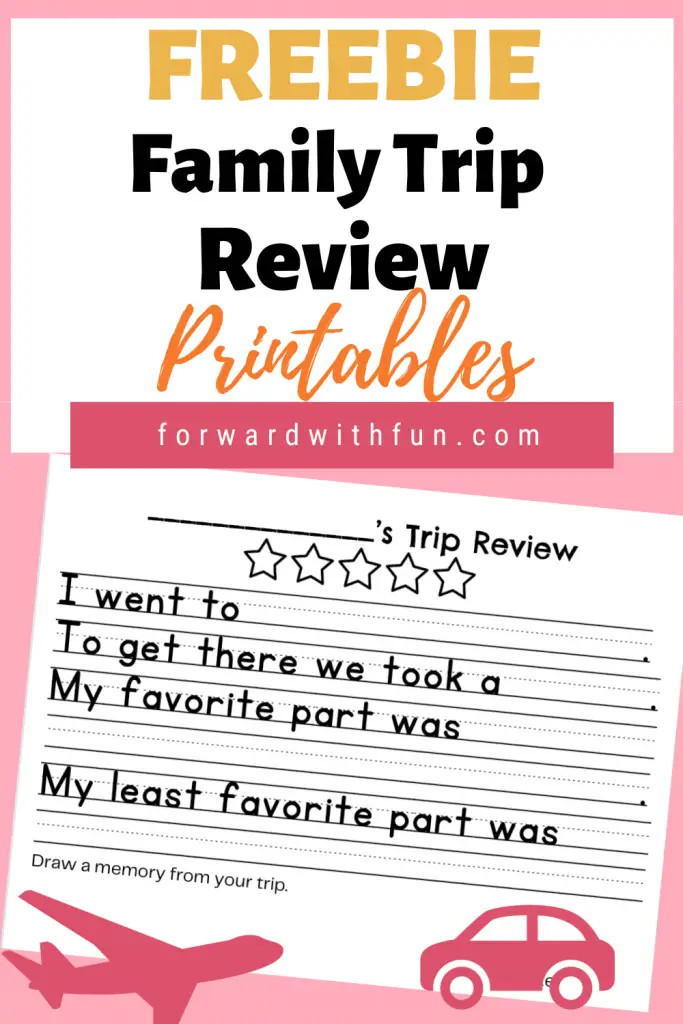
To make the review-writing process more engaging for both kids and simpler for parents/educators, I've created a 3 age appropriate versions of a free vacation worksheet that you use with your children or students. This worksheet is designed to prompt specific questions, guiding kids through their thoughts about the trip and helping them organize their ideas.
Engaging children aged 4-8 in the process of writing reviews about their family trips is not only a creative exercise but also a meaningful way to strengthen family bonds. The free vacation worksheet serves as a handy tool, making writing both enjoyable and educational for kids. Looking for more fun writing assignments for this age? Try this free one.
Let the magic of their words capture the essence of your family adventures. In 10 years when you find this binder full of trip reviews you'll be laughing and remembering the best parts of this enchanting time. They grow up so fast.
Today, we're going to dive into a squeal worthy preschool science experiment known as Fizzy Colors Surprise, and it comes with a FREE downloadable preschool science lesson plan at the end of this post.
With just a few household ingredients, you'll dazzle your preschoolers in the name of chemistry. Each time they add a dash of vinegar to a muffin pan, a new surprise color will be revealed as the baking soda and vinegar reacts and reveals the food coloring below. So, let's gather our materials and dive into the fascinating world of chemistry!
*As an Amazon Associate I may get a small commission if you decide to purchase from my links. Thank you.
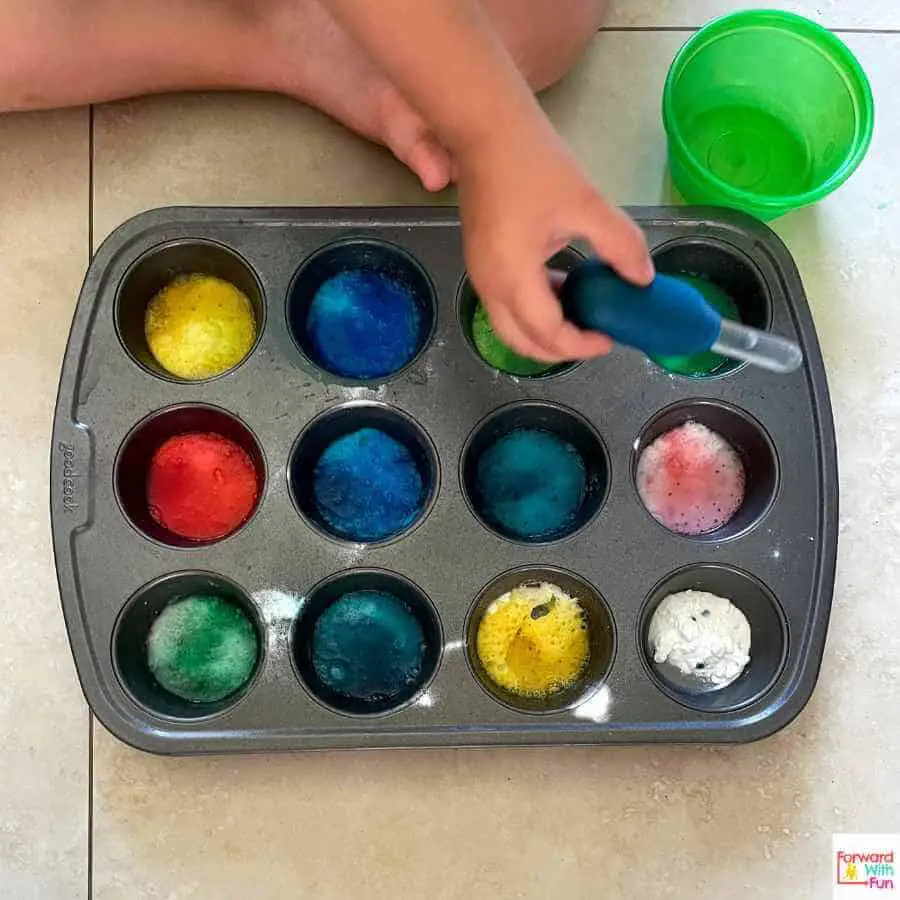
By doing this experiment, we will introduce preschoolers to basic chemical reactions using baking soda and vinegar. Children will make predictions and observations, record their findings, and describe the changes they notice happening during the chemical reaction.
Standards listed in the lesson plan are from the California Preschool Science Standards.
Materials:
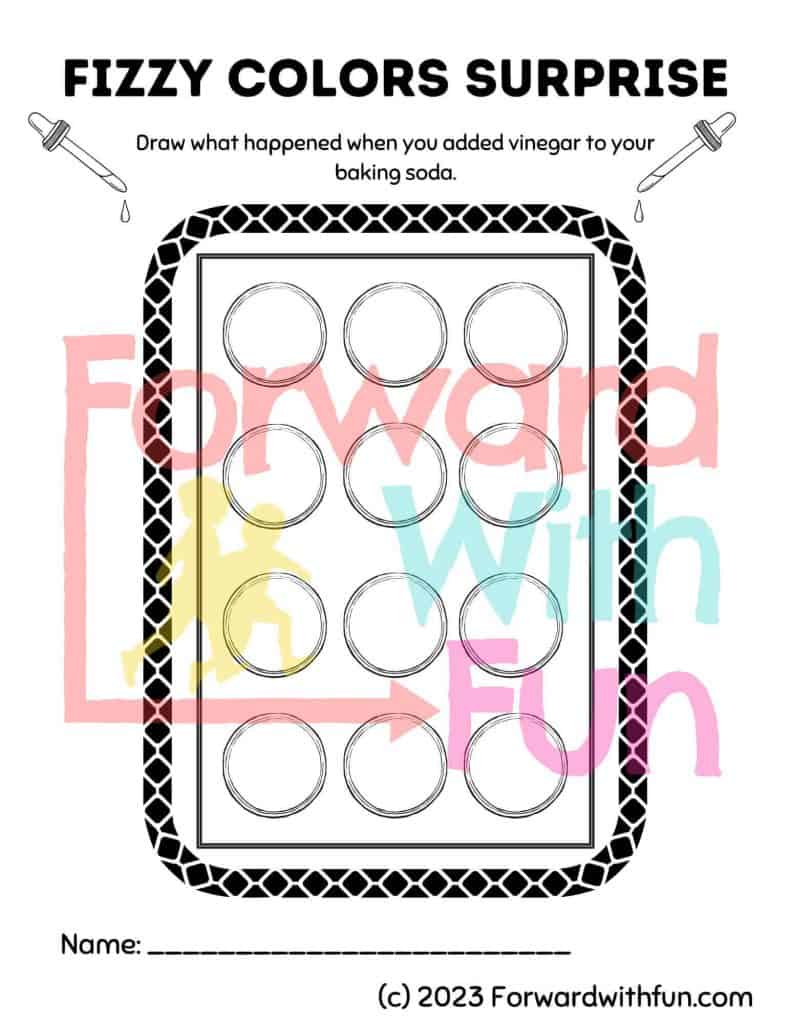
Prepare for the experiment:
Watch this video to see how easy it all is!
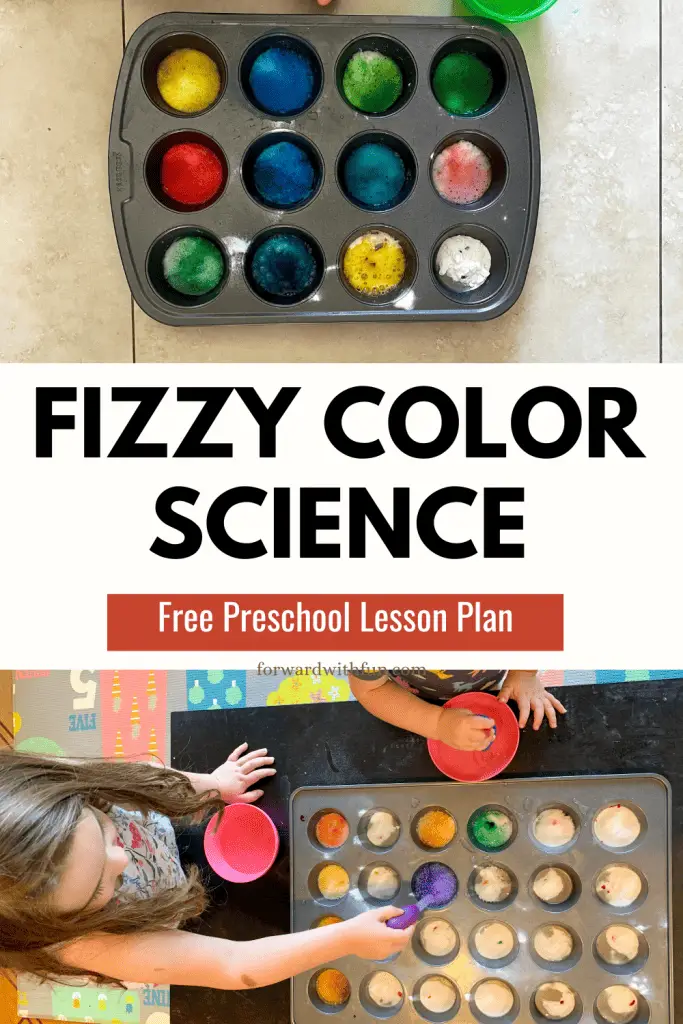
The Fizzy Colors Surprise experiment is an excellent opportunity for preschoolers to engage in scientific inquiry while having a blast with colors and textures (much like our most popular free STEM lesson plan The Floor Is Lava!). Through this hands-on experience, children develop their observation skills, make predictions, and have fun.
Remember, the most important part is to foster a sense of wonder and curiosity, so be sure to have fun and encourage open-ended discussions throughout the experiment.
Safety Note: Although this experiment is safe when conducted with adult supervision, please remind children not to ingest any of the materials used. Also, wearing safety goggles can add an extra layer of protection for their eyes.
So, gather your materials, put on your scientist hats, and let the fizzy colors surprise unfold! Happy experimenting!
As young children embark on their journey into school, they encounter a crucial concept known as the alphabetic principle.
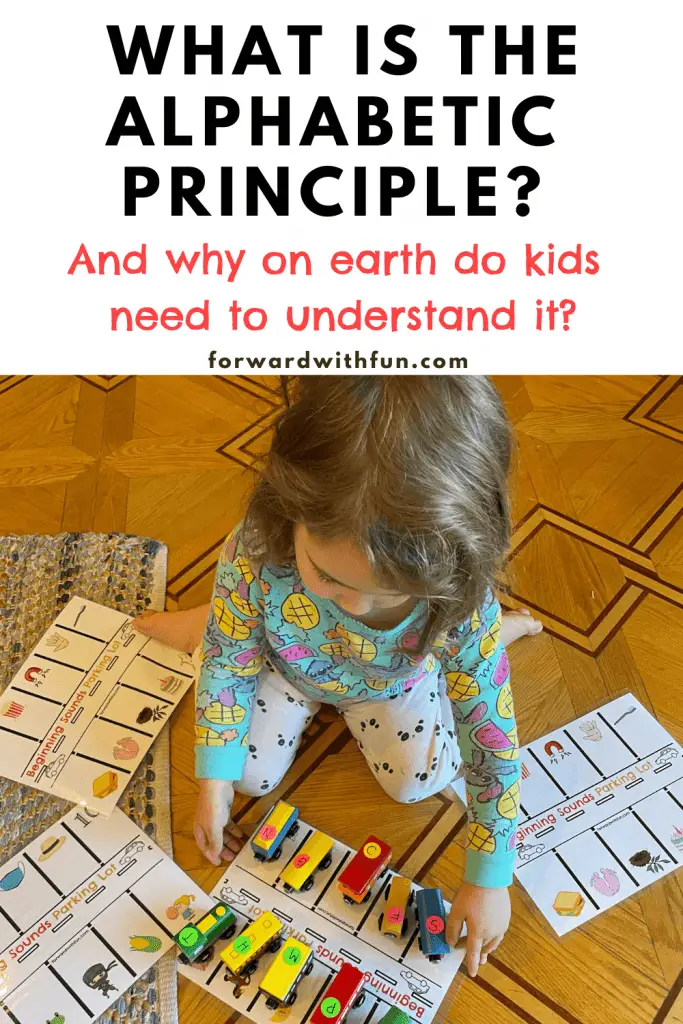
The alphabetic principle is the understanding that there are systematic and predictable relationships between letters and sounds in language.
Basically, it is the idea that what we say and hear can be represented by letters and words! Understanding this idea lays is a key beginning step in literacy development.
*As an Amazon Associate I may get a small commission if you decide to purchase from my links. Thank you.
The alphabetic principle is the recognition that written words are made up of individual sounds, known as phonemes, and these sounds are represented by letters. It is the fundamental link between spoken language and written text.
The alphabetic principle allows children to decode words by associating the sounds they hear with corresponding letters or groups of letters.
The understanding of the alphabetic principle builds 3 essential skills for learning to read and write fluently:
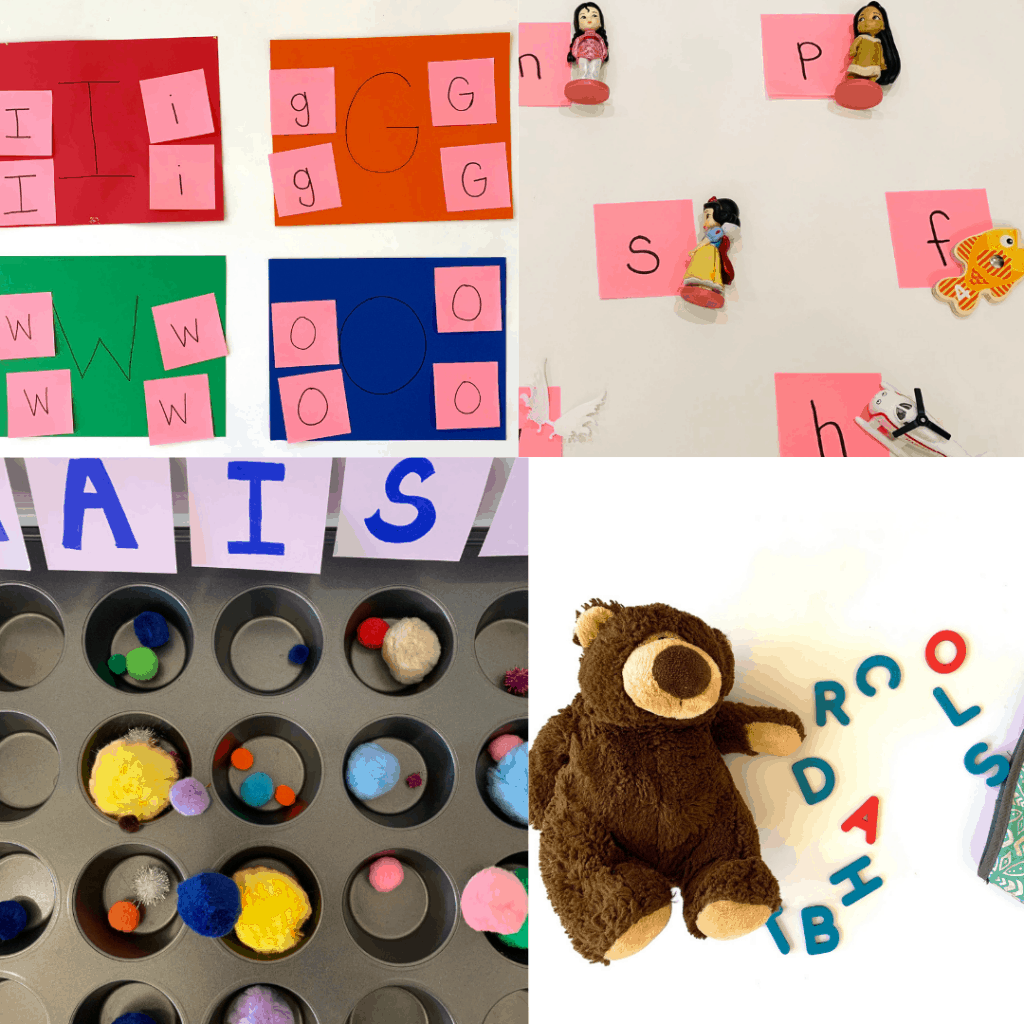

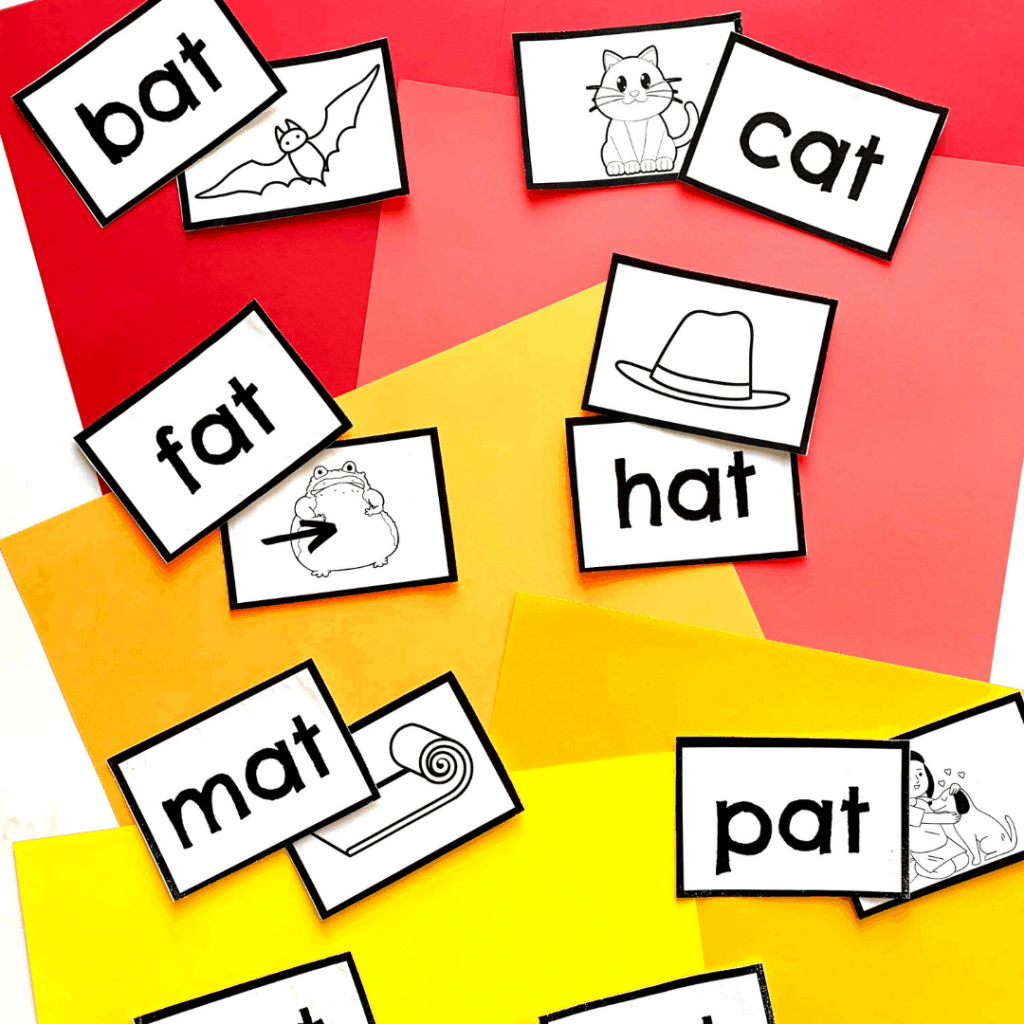
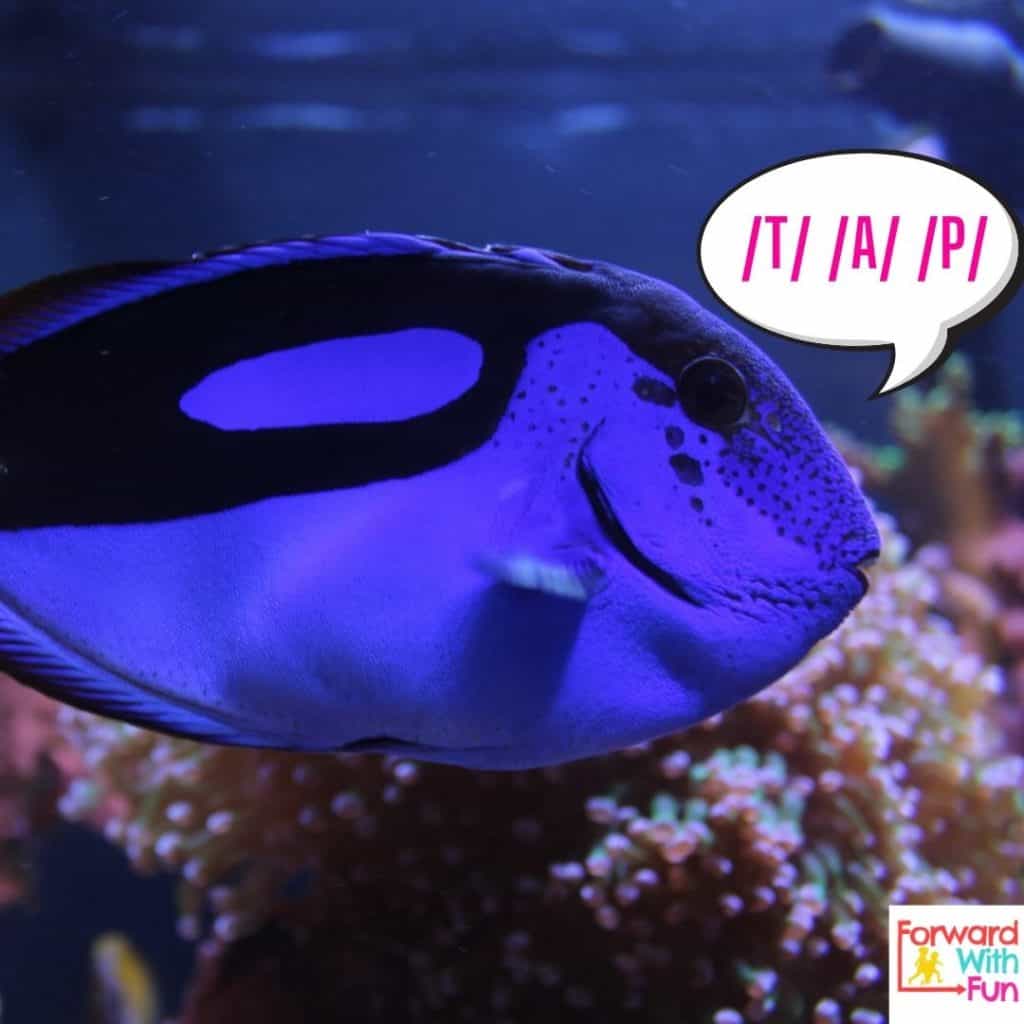

A kindergartner once told me, "Wow, Ms. KZ, the letters are all around us." It was that aha moment, that psychological paycheck that teachers live for. I want to help kids all over the world have success in reading and understanding that truly the world unlocks when literacy is achieved. Here are some more resources to help your little one see the words all around them!
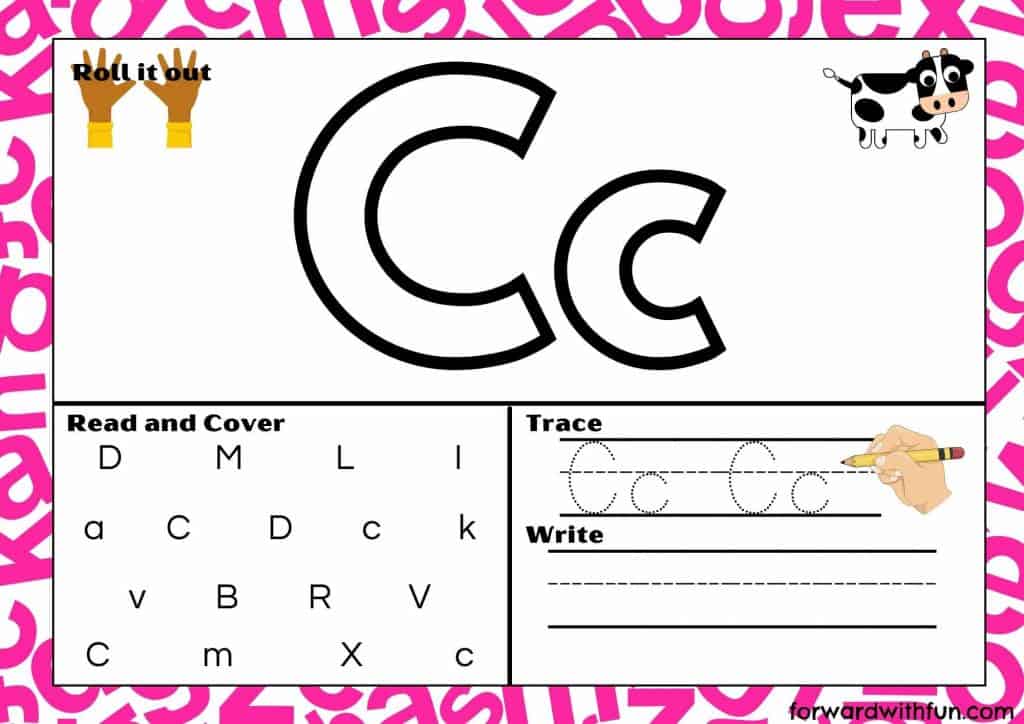
2. FREE Ending sound bingo game to enhance phonemic awareness (click the pic)
3. Beginning and Ending Sound parking lots for car lovers! (This one is $4.50)
Buy now!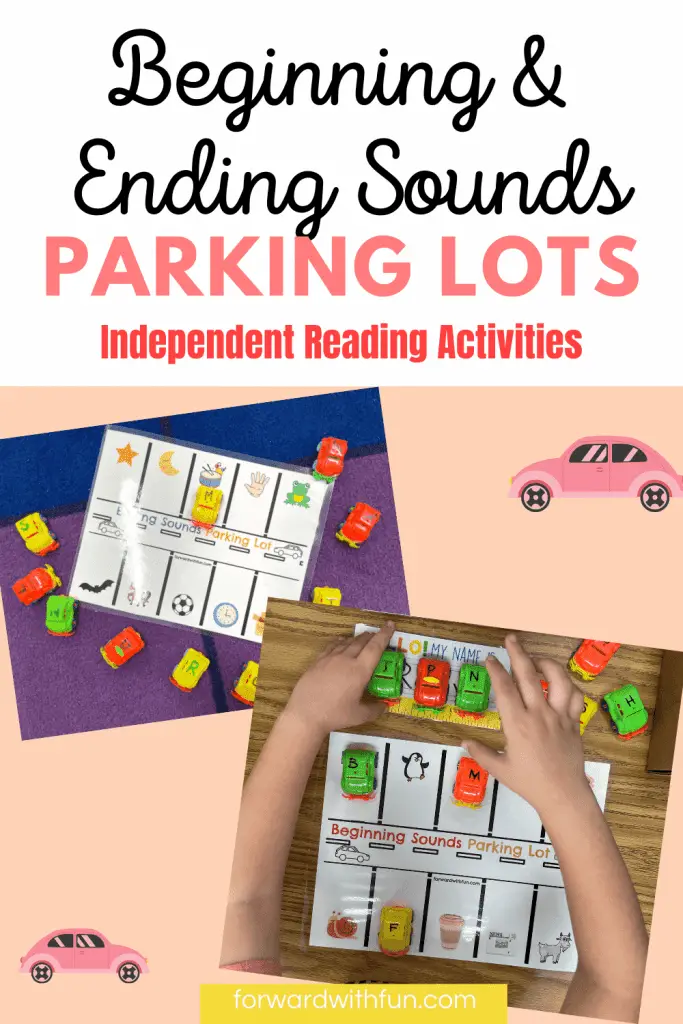
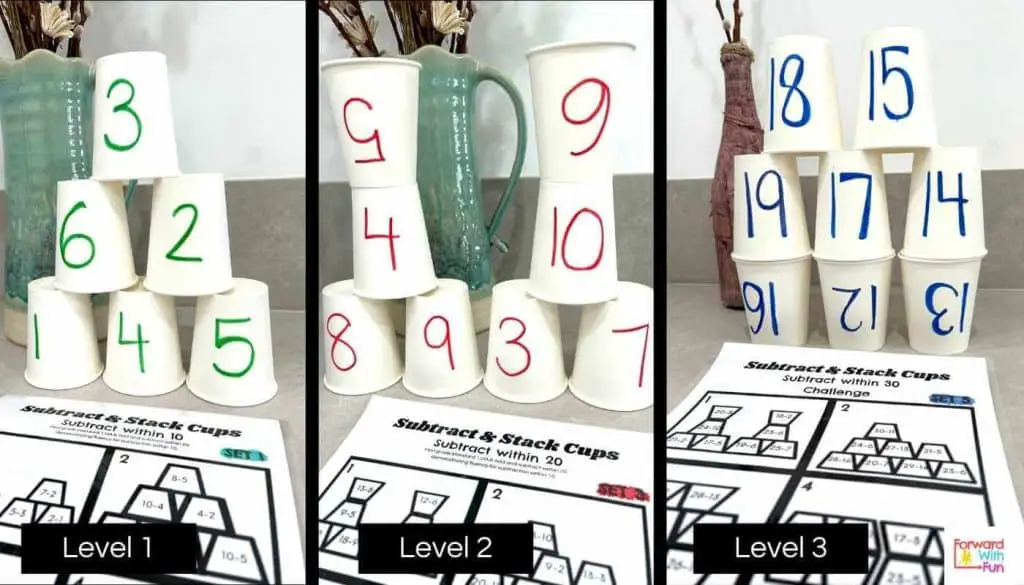
Children are building subtraction fact fluency in kindergarten and first grade. This means they need to know and practice their subtracts "facts" quickly. How can we motivate children to practice their subtraction facts? I can tell you, it's definitely not with a subtraction facts worksheet. Just the thought makes me cringe!
Success comes through playing games like these Subtract and Stack Challenges. I've made 5 different sets of challenges that cover subtractions facts in three ranges:
*As an amazon affiliate I may receive a teensy commission if you buy something from one of the links in this post, at no additional cost to you. Thank you.

To get to the nitty gritty, subtraction facts to 10 are any equation where something is subtracted from a number 10 or lower.
Subtraction facts to 20 are anytime a number is subtracted from 20 and the difference is a 1 digit number.
So technically, 20-5= 15 is not a subtraction fact, but 20-15=5 is a subtraction fact!
Fluency is the ability to perform an action quickly, almost to the point of automaticity. Subtraction fact fluency is another way to say the ability to do subtraction problems quickly.
The word fluency also shows up in the common core math standards such as in this first grade standard you'll see printed on the stacking challenges:
"1.OA.6 Add and subtract within 20 demonstrating fluency for subtraction within 10."
As children do more and more fun subtraction challenges, they build their fact fluency!
We all love a good print and play activity, and these subtraction stacking cups are the cream of the crop.

If you've already purchased my Addition Stacking cups activities, then you can use those EXACT same cups for both challenges. Want them? When you check out there is an option to bundle the addition and subtraction fact fluency challenges (40 total) for a discount. It's too good!
Then you'll have 10 sets of ready-to-go addition and subtraction activities for kindergarten and first grade, that you have prepped in a total of 5 minutes maximum. Did I mention they include answer keys so kids can self check?
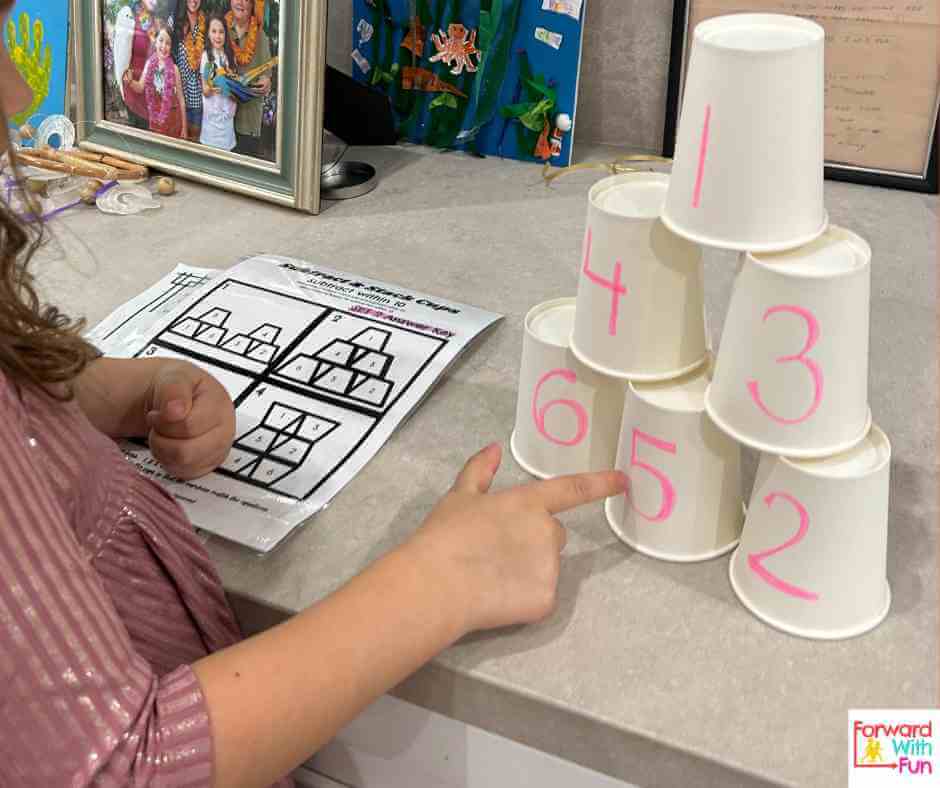
The Addition Cup Stack builds fact fluency to 6, 10, and 20 through hands-on fun that no child can resist. Just print the 20 differentiated addition challenges for students of all abilities and grab your cups.

*As an amazon affiliate I may receive a teensy commission if you buy something from one of the links in this post, at no additional cost to you. Thank you.
It's all in the name. Add the numbers on the sheet, and then stack the cup with the matching number.
Kids will build many cup towers while mastering addition, in a ridiculously fun activity that they'll beg to play. Believe me, I had to pry my children off these cups in order to take the pictures in this post.
The 5 differentiated sets of stacking challenges are made to meet the needs of learners at varying levels. Choose from adding to 6, to 10, or to 20 for a super challenge.

As a very loose guideline, this is how I use the cups:
Print out the 5 sets of challenges. Each will come with an answer key, so that kids can self check as they build, making this activity perfect for an independent math center.
To make the activity as kid run as possible, I laminated each set with its Answer Key on the back. So children will be able to self-check when they have completed a challenge.
You know how sometimes you buy an activity and you just never use it because it's too complicated to do? This is the COMPLETE opposite. Easiest. Prep. Ever.
These cups will be used for sets 1 and 2. Both sets work on sums to 6. (So for one child, you could use the same cups for sets 1 and 2.)

These cups will be used for sets 3 and 4. Kids will make sums to 10 here. (Again, if you'd like to reduce waste, you can just use one set of cups for these.)
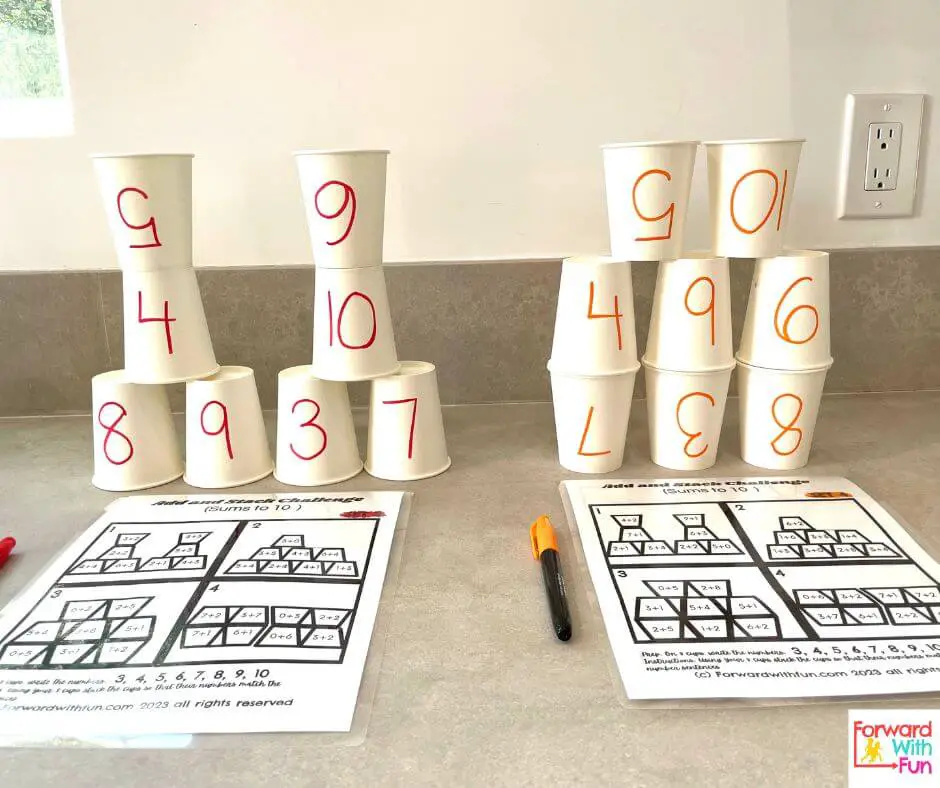
These cups are for the final set 5, for practicing sums to 20.

To avoid the cups from getting mixed up in my classroom, I have written the numbers in different colored markers that match the set number on the challenge sheet. This way kids with the same numbers on their cups won't fight over whose is whose. -Phew!-
You'll get:
Peep that bonus to add the subtraction stacking cups for a discount when you bundle!
Addition Cup Stack meets the common core standards for kindergarten and first grade.
Kindergarten Operations and Algebraic Thinking K.OA
Understand addition as putting together and adding to, and understand subtraction as taking apart and taking from.
First Grade Operations and Algebraic Thinking 1.OA
Represent and solve problems involving addition and subtraction

Besides the obvious, addition, kids are learning how to plan out how to move things in space otherwise called motor planning.
According to TheOTToolbox.com, motor planning is "the ability to plan out, organize, and carry out an action." In this case it is the ability to think about how to stack the cups to match each challenge. Will the cups need to be flipped? Right side up? How can we balance them on top of one another?
As adults this might seem really simple, but many young children benefit greatly from activities that involve fine motor planning, like this free printable STEM challenge.
Did you love this addition STEM challenge? I know I did!
I've finally finished the subtraction cups that use the SAME numbered cups we have already prepped. So you'll just need to print and be on your merry way. Does that count as a life hack?
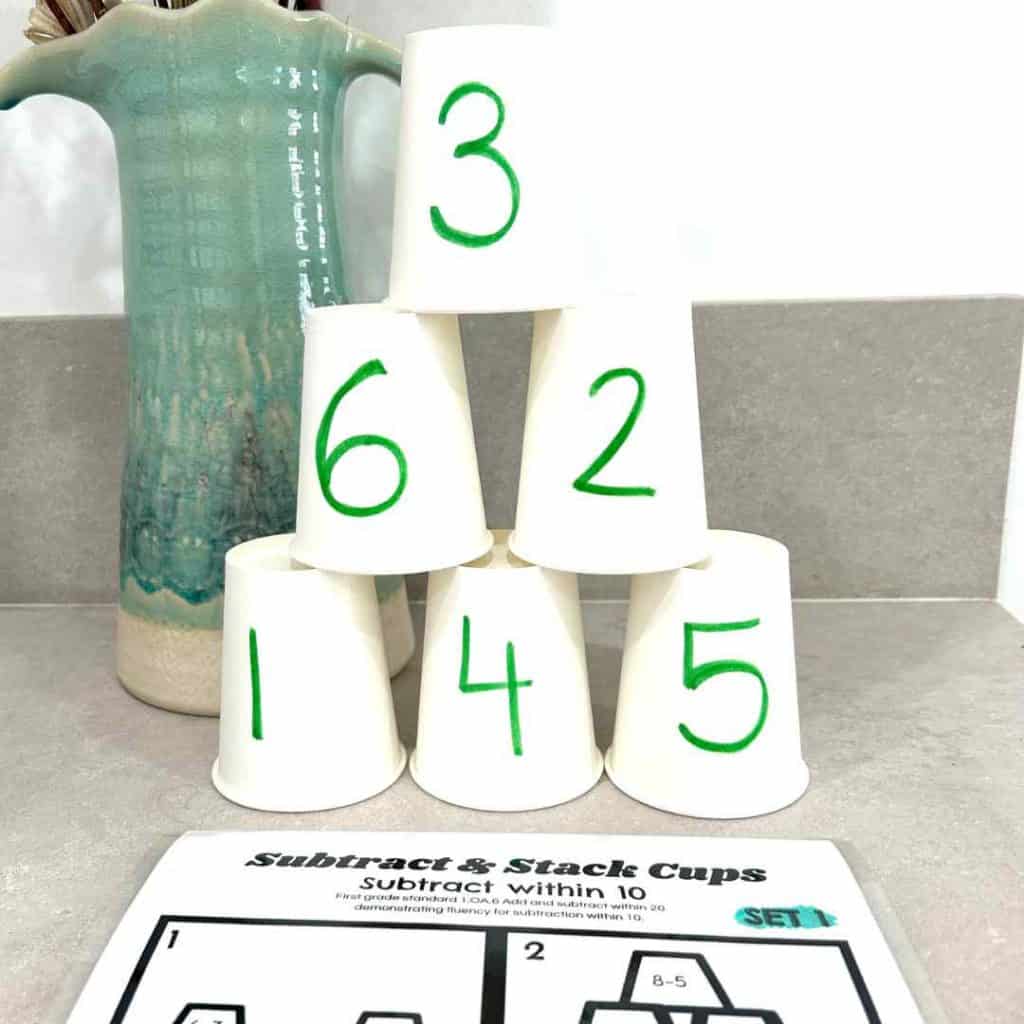
The original cup stacking challenge that inspired addition cups is actually a reading activity that went viral this year (2023). So if you're working on sounding out CVC words (consonant vowel consonant words), then be sure to check out this activity as well. I even included cups for the digraphs sh and ch to keep your kiddos challenged.
Why trace numbers to 20 with pencils, when you can use kid-approved vehicles to teach tricky numbers in a hands-on approach?
Find fabulous tips and tricks to teaching kids number formation and download number tracing mats at the end of this post for absolutely free!

*As an Amazon Affiliate, I may make a small commission based on your purchase at no extra cost to you. Thank you.
Kids are often resistant to tracing numbers on a piece of paper. Here are some great ways to get children to practice writing these numbers in less traditional ways:
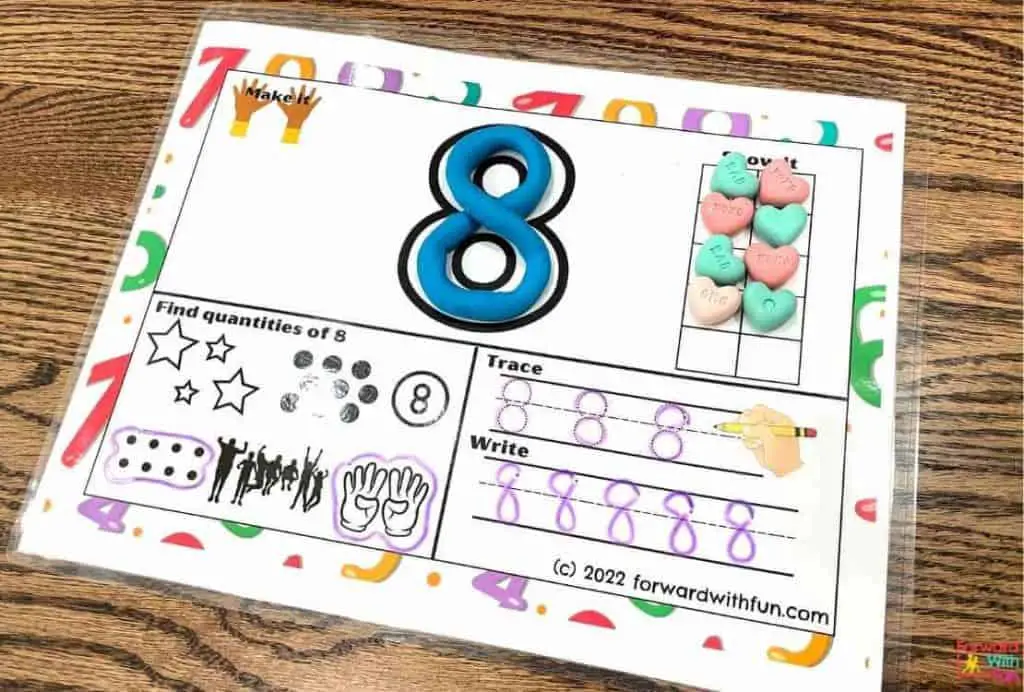
Kids love the idea of tracing numbers with planes, trains, or cars. If you're using these mats for a whole class I highly recommend having a plethora of cars.
These are our favorite -and you get 36 in a pack. You can also write numbers on them with wet erase markers to make this activity a little more challenging. Kids can match the car to the correct tracing numbers mat.
And while you have those super duper cars, hop on over to grab your beginning and ending sound parking lots- my students' personal favorite phonics activity where they park these little cars in the spot that matches their sound. Hands-on and multiple uses? Heck yes!

Lots of kids get stuck at those tricky teen numbers, so having a numbers poster that they can easily access can help them a lot. This poster can be used as a reference, hung on the wall or can easily be pasted in their math notebooks.
Or kids can use this 1-20 printable pdf in a homeschool environment, when tracing numbers to 20 with nontraditional materials (like in the list above). Click for the pdf.
When kids first begin to write numbers independently, they may have some trouble remembering proper number formation. I made a video, showing one of the hands-on ways kids can trace numbers to 20, to share the rhymes that have helped my students the most.
These rhymes are extra helpful to say to each child as they trace their numbers to 10.
Watch them on Pinterest to easily save them for later.
Make sure you print these in color and either laminate them or place them in sheet protectors so maximize their lives. If you love them, please give us a shout out on social media and tag @forwardwithfun.
It's a no brainer to use this adorable WANTED poster for your kindergarten winter writing project.
Gingerbread decorating is a common winter theme, along with the exploration of Gingerbread related stories, so let's keep with the theme and create our own WANTED poster.
*As an Amazon affiliate, I may get a small commission for purchases made through links in this post.
The Runaway Gingerbread man is a famous story, but did you know there are many stories that have runaway gingerbread characters?
My kindergartners and I love the following stories to compare and contrast the following gingerbread stories (all perfect to inspire winter writing!):





Before writing, students will need to create their very own gingerbread people to decorate. You can use the template from the second page of the Kindergarten Winter Writing PDF to trace the gingerbread shape onto a piece of construction paper. If you have brown printer paper, you can also print it on that.
Items you'll need to decorate gingerbread people:
Kids added the following to their gingerbread:
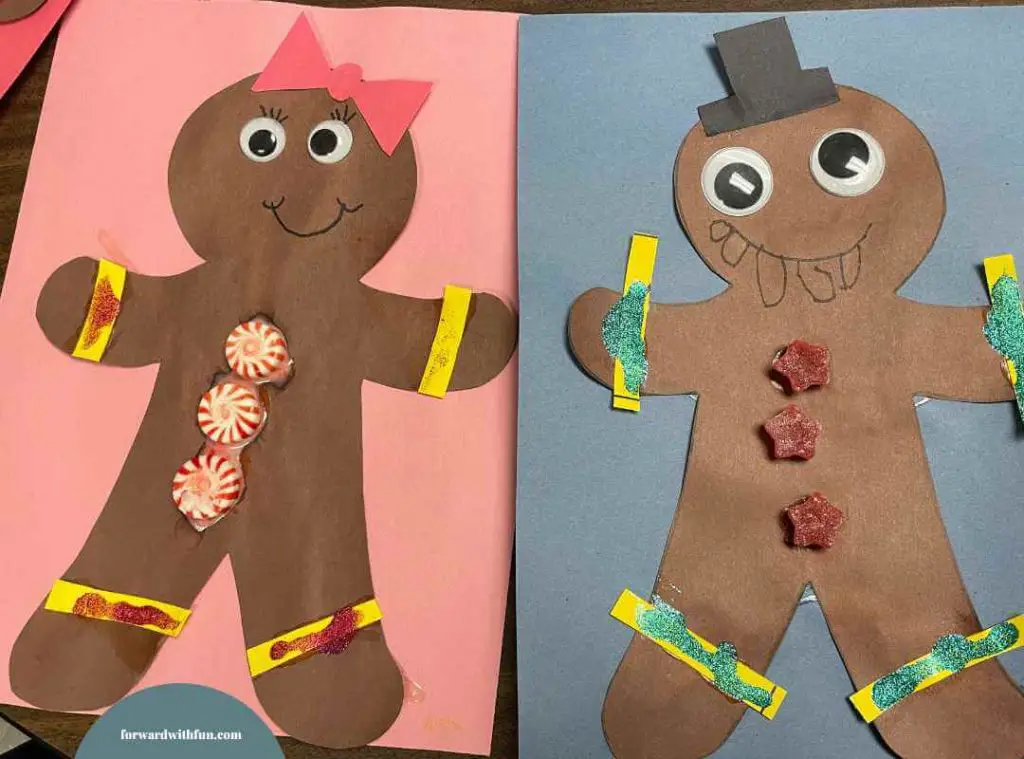
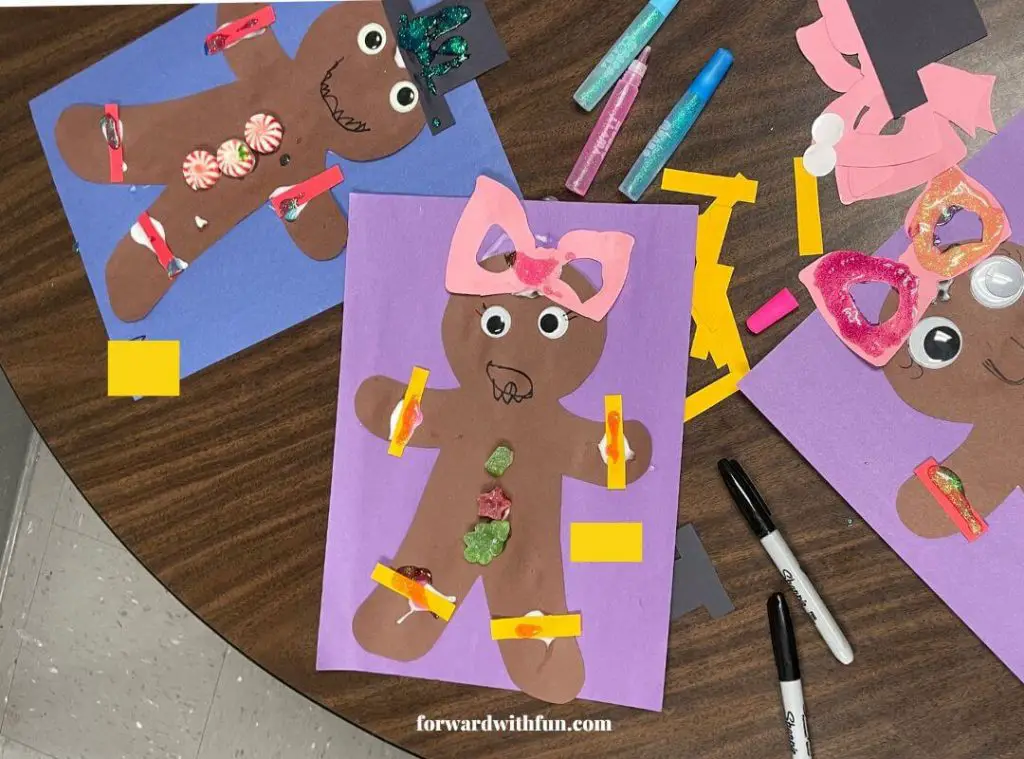
Once our gingerbread people were dry, we chose our favorite color as a background for them. Then we discussed the most important parts of the gingerbread person. (This is a great opportunity to build vocabulary especially if teaching students who are still learning English.)
A great kindergarten writing prompt is labeling. (It also lends itself nicely to learning about diagrams, an important text feature in kindergarten.)
Labeling is very accessible to kindergartners because usually it requires the writing of only one word at a time, and children can usually name parts of different pictures on their own.
I use these labeling stickers from Target because they're super cheap ($1.99), and who doesn't love stickers?
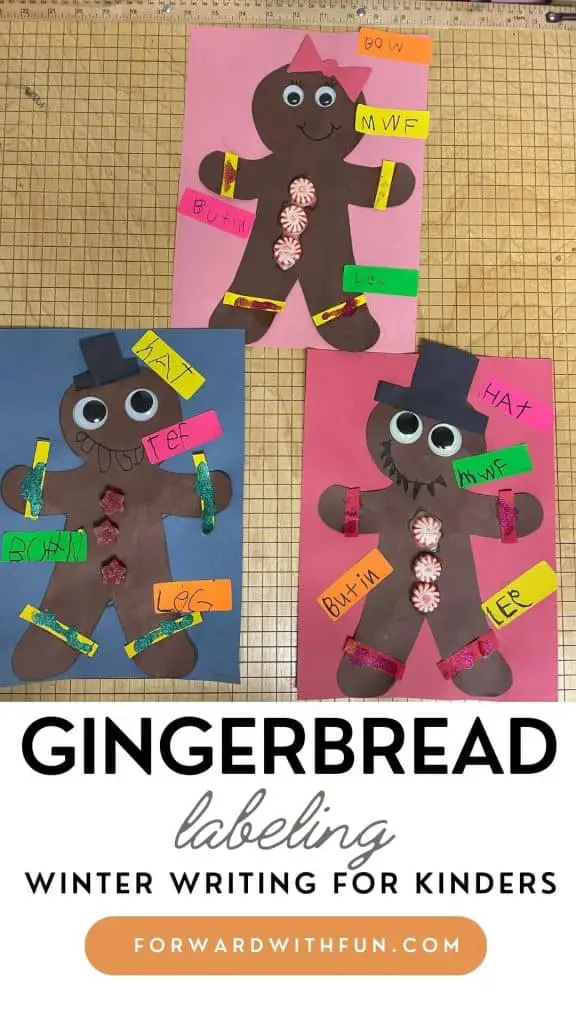
I got the idea of doing a gingerbread wanted poster after reading these stories with my class in 2013. When making connections from the story to our own lives, a student retold the story of their dog running away and how their family made signs describing the dog to put up around the town.
This project was a spin on that idea. And it really makes a great "on the wall" kind of display to put up in the classroom or home.
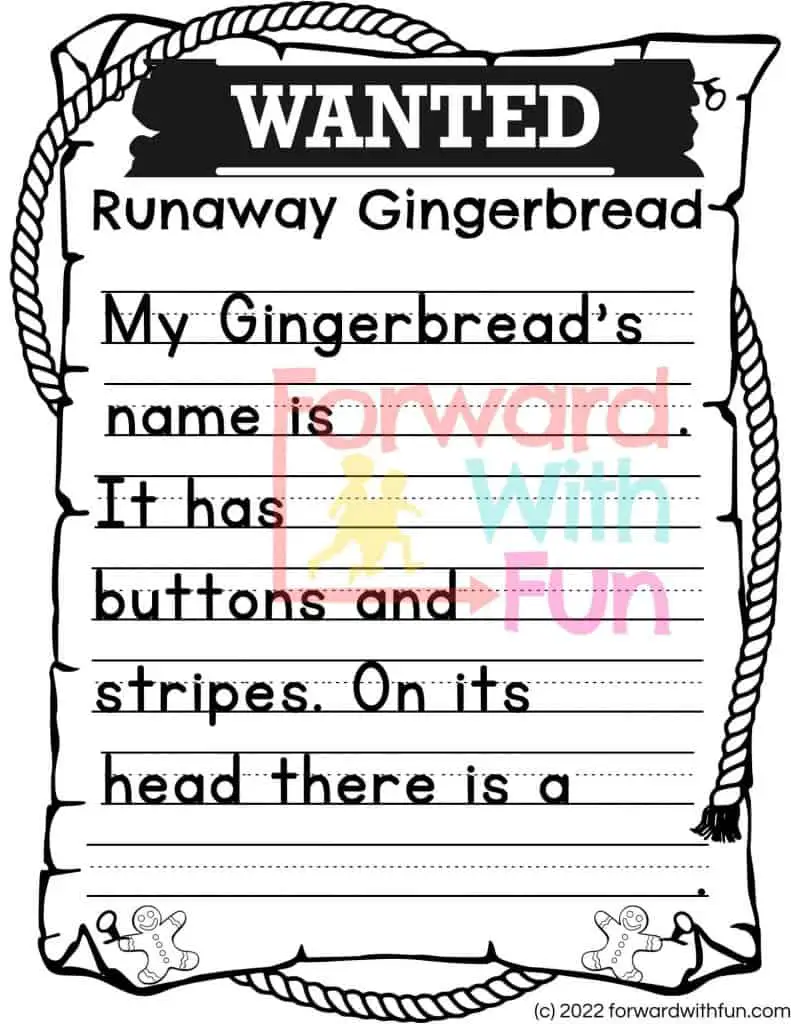
Parents, if you're reading this, you might notice that when students are writing in my class, their words are not spelled correctly. They're spelled as they sound -phonetically.
The best kind of spelling to use at this age is phonetic spelling, and if you're curious about why I don't have kids spell things the "grown up way," I would highly suggest reading this post.
Before You Download:
I do share lots of free activities because teaching is hard enough as it is. In return please consider following me on Pinterest or Instagram to see more cute activities for you to use with your kiddos.